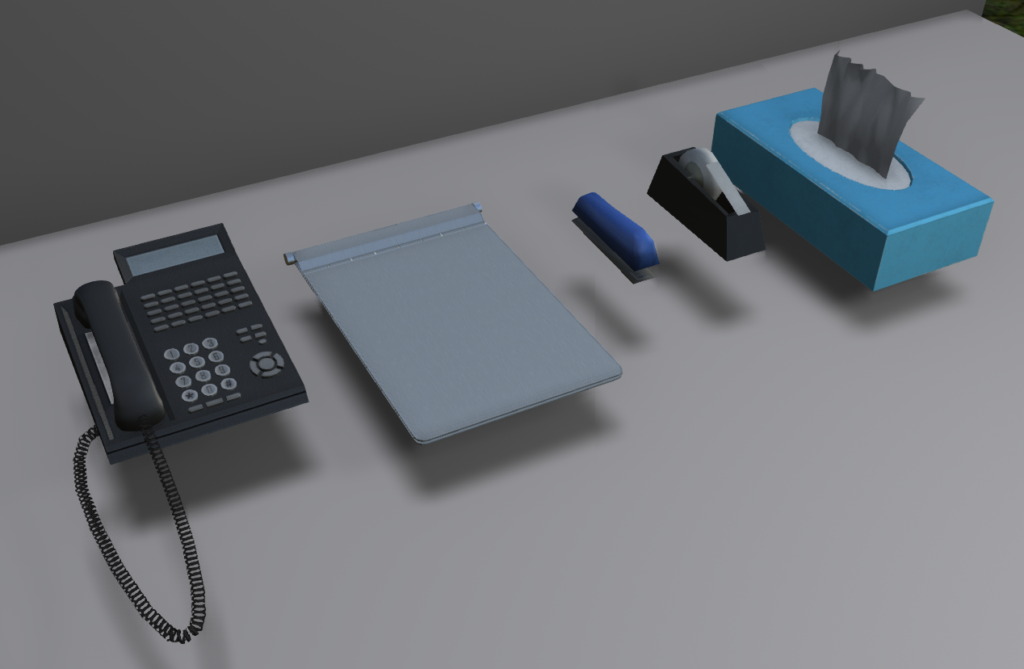Second Life has been around for nineteen years and has had its ups and downs. It saw a major push for brand presence in the late 2000s and has continued to be a second home for, on average, 40 000 concurrent users every day.
In light of the recent pandemic and need to turn to remote means of conducting work & entertainment, we’ve seen a renewal of energy and enthusiasm for Second Life. Linden Lab revived the Solution Provider Program (last heavily active some years ago) recently and has since also been ramping up relations with businesses who are either new or returning to Second Life.
Writing as someone who has been a user of Second Life since 2006 and professionally developing content for clients since 2007, I can say that a lot has changed and folks who visited many years ago would do well to revisit it with fresh eyes. It’s home to a large community of users from diverse backgrounds and interests, and continues to grow by providing its users the tools to create more detailed, realistic, and creative content.
This article is written as a springboard for developing your project; if you are reading this with interest representing a company, school, or other group in Second Life, but don’t know where to start, here are a few considerations you should take into account as you develop your virtual world strategy.
How much time have you spent getting familiar with the platform?
Developing presence within Second Life is a commitment – not only from a monetary point of view, but from a personal resource level as well.
In order to understand how your cohort will make use of Second Life, it is very important for all stakeholders to set aside some time to get familiar with it too.
While it is not necessary to spend many months or years, I do recommend that your team takes some time to explore or be guided to see what the platform has to offer. This can help your contractor consider your needs, your expectations, and what you’ve seen already, and use that as a springboard to design from. It’s also a big time saver knowing that everyone on the team is on the same page!
What are your goals for presence within Second Life?
There are many ways in which Second Life can be leveraged to be of use to your organization. Here are a few:
Additionally, all of the above are going to be deeply affected by the following factors:
Who are your cohort?

Has this cohort spent any time in Second Life or other virtual platforms before?
All participants of your project are individuals, but it’s a good idea to get a general idea of your audience.
Are your cohort tech-savvy and open to learning anything? Do they like to customize and accessorize their appearance? Or perhaps do they already have busy lives and have minimal time to spend on something else?
It is important to gauge what kind of time your cohort wants to spend getting up to speed, as addressing this early on by means of a dedicated on-boarding and orientation process will be key to retaining their interest and prolonged presence.
What hardware will they be running?
In this day and age, computer use for work or entertainment is almost ubiquitous. Second Life is also a very flexible platform which allows for subject matter appreciated by viewers of a diverse range of ages, viewpoints, and backgrounds.
With that said, not all potential users have access to a computer capable of accessing Second Life, and not all potential cohorts have the motivation to learn a whole new set of controls and concepts.
Additionally, not all potential business users have IT departments which will let them install a Second Life viewer without authorization.
Get to know who you want to reach and understand whether using Second Life is even a viable proposition, otherwise the project may be set up for failure before it has even begun.
Generally speaking, we find Second Life accessible to computers five years or younger, possibly up to 10 years for dedicated gaming computers.
What is the length of your project’s intended presence in Second Life?
A major underlying cost to any presence within Second Life is the land upon which a project is built. While other options are available, it’s generally recommended that major projects make use of full regions, as they will afford the most flexibility and control for the client.
Additionally, it is important to consider what kind of time it will take for your project to accomplish its goals (Reach new audiences? Train existing clients, staff, or students? Put on an event?) and how long it might take to get your potential cohort 1) familiar with Second Life, if they have not used it previously and 2) familiar with the goals of your project.
A few days or weeks to a month?
A short commitment is feasible depending on what you intend to achieve, however your cohort demographic must be considered carefully and provided for adequately if their experience level is low. If this is the case, an adequate amount of space and time to allow for this orientation to take place is necessary.
The development & set up time running up to your event should also be considered well in advance. A large event might still need a few weeks to several months to develop, depending on your needs.
Short events may also present a different cost structure with respect to land rental. If your developer is able to put together your project offsite and simply set it up quickly on land prior to your use dates, it may be more economical to look in to region rental by the day, rather than monthly.
A month to six months or more?
Once several weeks to a month are on the table, cost-wise you might as well be purchasing a full region. This in itself can be a fair commitment, so making your investment worth the time and energy involved is important.
This doesn’t necessarily mean undertaking an ‘all in, all at one time’ approach; committing to a longer period of presence allows for a more graduated sequence of development, as well as a greater scale of development over time based upon your organization’s needs.
Regular additions and development on your project will also help to keep it fresh and updated in the long run, which is an important factor in encouraging continued engagement from your cohort.
What is your budget?
Development Costs
Are you dipping your toe in on a shoestring budget? Or would you like to invest in a comprehensively built design that is tailored to your requirements?
Having existed for nineteen years and thus accrued a significant amount of user generated content, Second Life is full of pre-made items at low cost which may or may not suit your needs.
It is, however, important to note that not all of this content is built with efficiency or consistency in mind. As such may not ultimately be appropriate, plus it can be difficult to find the exact thing you are looking for, and shopping for the right items can be quite time consuming.
A full-service contractor should be able to provide all aspects of your build in a cohesive and responsible manner. They may also have existing internal assets on hand which may be appropriate for your situation.

Land Costs
As touched on previously, there are a number of different options available to you as far as land, and they really vary depending on intent of use in terms of scale, volume, and privacy. There are also discounts for educational and non-profit institutions.
For projects spanning a month or more, the gold standard we recommend would be a full region, but not every project requires this and there are some projects which require more.
At this level, you can expect to be paying US$349 in setup fees for a standard ‘full’ region directly from Linden Lab, plus a monthly $229 maintenance fee. This offers the greatest flexibility with on-boarding your cohort (if you choose to have them sign up specifically to visit your project), land customization, and controlling who can access the region.
Other options which would suit smaller projects or budgets should be discussed with your contractor as part of the design process.
What Doesn’t Work in Second Life?
The ‘Build it and they will Come’ Mentality
2005-2008 was a time in Second Life which was characterized in the media largely as a period during which hundreds of companies rushed in, with varying success. The vast majority made their presence known through static displays and did little else to engage with their audience. It wasn’t long before name brand shoe stores or phone companies had built to the full extent of their intent, abandoned Second Life entirely, allowing their displays to exist for as long as their budgets would allow, accumulating all manner of refuse abandoned by visitors and passers-by alike. The lights were on, but no one was home.
For many long term users of Second Life, these became very obvious failed attempts at relevance and were an indication of companies jumping on a trend, failing to follow through or grow, and just overall failing to engage on any meaningful level.
This led to no end of think-piece articles from business writers over the years about why Second Life failed, when ultimately the failure was not in the medium but in the message. Meanwhile, Second Life is still alive and well!
Shoehorned Projects
It’s important to consider whether Second Life is the best venue for what you’re trying to do.
Many things are possible to do in Second Life, but that doesn’t mean they are best done in Second Life.
- If you’re a clothing designer and you want Second Life users to try what you make before they buy, does this model adequately address body size differences which could be assessed more accurately in person? And how does your customer assess the quality of the product without seeing the real thing?
- On the other hand, if you’re a clothing designer who wants to do market research on what design elements people like in your work, Second Life has an active and creative fashion community that is always looking for new and fresh ideas.
- Could your project be accomplished faster/easier/more secure on a web-page or through other existing applications? What added benefit will conducting this functionality provide in a three-dimensional space?
What Next?
Here are a few key recommendations:
- Sign up, log in, get to know how to get around and do some basic customization in Second Life.
- Think about how this experience might apply to or affect your cohort, and to what extent you would like to control it.
- Consider what your goals are and whether they can (or should) be accomplished all in one go.
- Get in touch with a contractor or consultant to help define your first steps should be, large or small, sooner better than later.
Consider the above carefully and try to assemble at least an outline of what you need when seeking a contractor or consultant to help accomplish your goals. Having a concrete idea of what the client would like to have done is very important when it comes to breaking down exactly how much work needs to be done and how to best schedule and parcel out the work internally. For this reason, we don’t recommend seeking an immediate ballpark figure without any detailed breakdown of tasks involved, as even finer details about your project may affect development time.
Hopefully this gives you more information on your fact finding mission on developing a presence in Second Life. Give it a try, and see if it works for you!
